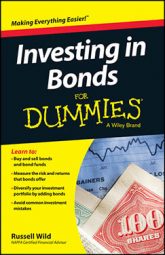A difficult decision for bond investors putting in fresh money occurs at those rare times in history when you see an inverted yield curve. The yield curve refers to the difference between interest rates on long-term versus short-term bonds. Normally, long-term bonds pay higher rates of interest. If the yield curve is inverted, that means the long-term bonds are paying lower rates of interest than shorter-term bonds.
That situation doesn't happen often, but it happens. The reasons for the yield curve are many and complex, and they include inflation expectations, feelings about the economy, and foreign demand for U.S. debt.
Whatever the reasons for an inverted yield curve, it hardly makes sense to tie up your money in a long-term bond when a shorter-term bond is paying just as much interest or possibly a slight bit more. Or does it?
Some financial planners would disagree, but don't be averse to investing in longer-term bonds even when the yield curve is a slight bit inverted. Perverted? Nah. Remember that a large reason you're investing in bonds is to have a cushion if your other investments (such as stocks) take a nosedive. When stocks plunge, money tends to flow (and flow fast) into investment-grade bonds, especially Treasuries. Initially, the "rush to safety" creates the most demand for short-term bonds, and their price tends to rise.
Over time, however, a plunge in the stock market often results in the feds lowering interest rates (in an attempt to kick-start the economy), which lifts bond prices — especially the price of longer maturity bonds. In other words, long-term Treasuries are your very best hedge against a stock market crash. If that hedge is paying a hair less in interest, it may still be worth having it, rather than shorter-term bonds, in your portfolio.
Consider another reason for investing in longer-term bonds, even if they aren't paying what short-term bonds are paying. What if interest rates drop, regardless of what's going on in the stock market? Sometimes interest rates fall even when the stock market is soaring. If that's the case, once again, you may wish that you were holding long-term bonds, says bond guru Chris Genovese. "If interest rates are falling when your short-term bonds mature, you may be forced to reinvest at a lower rate," he says. "In the context of an entire bond portfolio, having both short-term and long-term bonds, regardless of the yield curve, may be advisable."
The recent yield curve has not been inverted at all. As of late, longer-term Treasuries in particular are currently paying a good deal more than short-term Treasuries, which are now paying crew-cut rates. By the time you're reading this, however . . . who knows?

